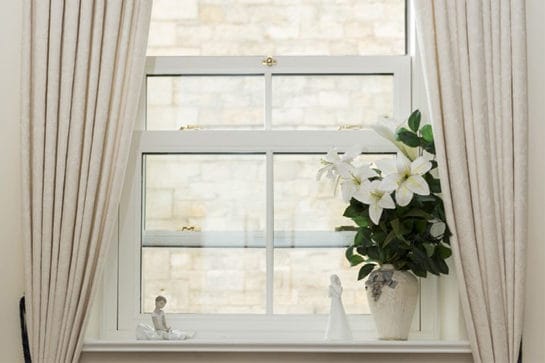They’re an attractive feature and a great way of adding character to a property, but knowing when it’s time to replace your sash windows can feel challenging. Equally, it’s a big investment and understandably you may feel reluctant to make it unless and until you really need to.
However, there comes a time when a repair is no longer economically viable and replacement of your existing sash windows is your best option. Ignoring the issue could put the security and energy efficiency of your home at risk, and even, potentially, your health. This guide aims to help you understand when it’s the right time to do this work.
Technology has come on hugely in recent years, meaning that if you’re replacing sash windows, you’re not limited to timber models. If you’re on the lookout for something more hardwearing and durable, requiring less maintenance, uPVC sash windows make a stunning choice or you can even opt for uPVC timber sash windows. What’s more, modern versions can be hard to distinguish from their real timber counterparts.
What Exactly Are Sash Windows?
Of course, everyone’s heard of them, and they’re one of the most instantly recognisable traditional window styles, but could you define sash windows precisely?
The term comes from the French ‘chassis’ or frame. Essentially, they comprise at least one moveable panel or ‘sash’ forming a frame to hold glass panes. These are often separated from each other by glazing bars. The panels are opened by sliding vertically or horizontally, and the weight of the glazed panel is typically balanced by a weight hidden in the frame and connected to the window by a cord or chain.
Sash windows date back to the seventeenth-century, and the earliest surviving examples were fitted in places such as Ham House, near Richmond, London. However, some argue the sash window was actually a Dutch invention.
Georgian, Victorian and Edwardian homes often have sash windows, so while they’re highly versatile, these models are especially suited to period properties.
- Georgian sash windows typically have a ‘six over six’ pane design, with bars holding smaller glass squares together. (In modern designs, the bars are just decorative.)
- Victorian models stood out thanks to sash horns, or short protrusions found below the middle bar. There would usually be two panes above two panes.
- Edwardian-style versions suit properties dating from the early twentieth century and usually feature a ‘six over two’ design.
Sash Window Material Options
Options for materials include real wood or low-maintenance, energy-efficient and cost-effective uPVC. Composite sash windows are also increasingly popular, with some of the newer units offering a timber interior and aluminium cladding exterior.
Clearly, sash windows have evolved significantly over the years, with a greater range of materials and designs available, offering modern high-quality performance.
Replacing Your Sash Windows: The Signs to Watch Out For
Here are some of the key tell-tale indicators that your sliding sash windows are beyond repair:
You’re feeling a draught
If your home takes too long to warm up when you put the heating on, or you’re starting to notice draughts, that’s a giveaway sign your sliding sash windows are old. Your home is no longer energy-efficient.
Around 10% of a property’s heat is lost through its windows, making it really important to have thermally efficient ones.
A beady eye on condensation
This is another clue – drops of moisture on your windows. This rots the timber around your sash windows and makes the air damp so that, over time, there may be potential health risks. Condensation could mean you need double glazing if you don’t have it already, or that the seals on your windows are not functioning properly or providing effective insulation.
Sounds bad: noise pollution
Especially if you live in a busy urban area, noise pollution is an indication you’re not getting optimal performance from your sash windows. New models will restore the peace, quiet and comfort.
Faded furniture
While this may sound like a slightly odd reason for replacing windows, if you’ve noticed your furniture is losing the strength of its colour, it suggests the glazing isn’t working or providing enough effective UV protection. New sash windows will keep your furniture looking its best.
Rising energy bills
Of course, costs go up all the time. But if you’ve noticed substantial energy bill price rises and always have the heating on because your home can’t retain heat, new windows could well be the solution.
How We Can Help Your Update Your Sash Windows
If this makes you realise your horizontal or vertical sash windows need replacing, we at Isis Windows can help. We have many years’ experience of fitting sash windows in Oxfordshire, so are ideally placed to do a professional, friendly and efficient job with minimal disruption to your daily life. Get in touch today for a free, no-obligation consultation.

